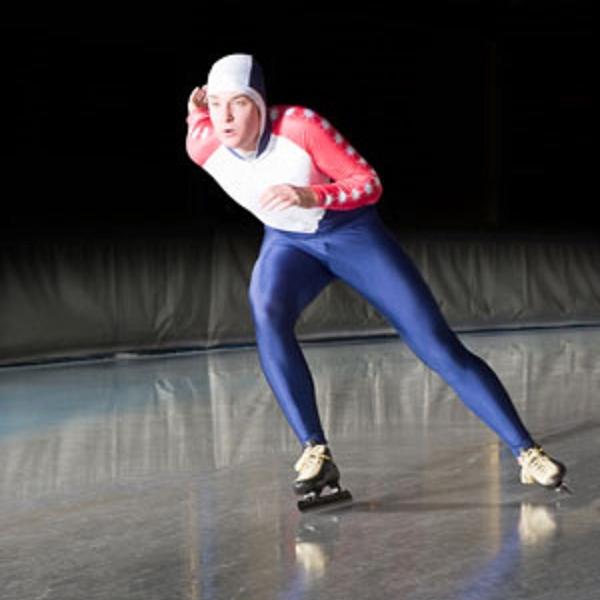
For those of us who’ve ventured onto a frozen pond, or to open skate at the local ice rink, we know that balancing and propelling our body across the ice on thin metal blades (without a wipeout) can sometimes be easier said than done. And, when we do wipe out, it sure can leave us with some good bumps and bruises due to speedskating injuries. Now add in speeds of 30 miles per hour, a turn that places your body parallel to the ice, razor-sharp blades that are only 1 mm across and a crowd of people trying to skate faster than you are! No wonder why speed skating can be one of the more dangerous games in Sochi, with the majority of injuries caused by falls and impact and high speeds, resulting not only in lacerations and concussions, but sprains, fractures and tears.
Christine Licata, PT, DPT, SCS, CSCS and Andrianna Rogers, PTA, our ATI Injury Analysts in Chicago, Illinois, offer their expertise advice on speedskating, the injuries that are most common for these athletes, and what it takes to prevent and rehabilitate these injuries.
“Possessing knowledge of common injuries in certain sports and how physical therapy can contribute to the athlete’s recovery when injured gives us an appreciation for Olympic athletic participation and success,” says Christine and Adrianna.
Common Injuries in Speedskating
- Extremity fractures of the ankle, tibia, distal radius (wrist), and femur from falls at the apex of the turn and collision at speed with the boards of the padding1
- Cervical spinal injuries including fractures and sprains also associated with collision pad or board1
- Head injuries/concussions without amnesia1
- Brachial plexus (network of nerves that originate in the neck region) traction injuries seen most commonly in inexperienced skaters who attempt to protect their heads during a fall on outstretched arms1
- Lacerations1
- Nerve injuries1
- Low back pain most commonly seen in distance skaters1
- Minor lumbar strain1
- Athletes with the pre-existing back conditions need to be monitored for development of lumbar spasm, radiculopathy, or disc injury1
- Muscle strains and overuse injuries of the hip adductors, hip flexors and hamstrings1
- Overuse syndromes such as patellar (kneecap) tendonitis, anterior knee pain, achilles tendonitis, and exertional compartment syndrome1
- Chronic bursitis of the foot and ankle caused by improper skate fit or large skating volumes in properly fit skates1
How Physical Therapy Can Help Speed Skating Injuries
- Physical therapists can assist athletes with injury by teaching them better stretching techniques and aid in strengthening the damaged area without causing further damage.
- Focus on hip and core strengthening is crucial to address and prevent overuse injury and strain to the lumbar spine, hip, and hamstring musculature.
- The hip and core are also important areas to address with athletes who are experiencing anterior knee pain.
- Balance and proprioceptive training can be used to address and prevent ankle and foot injuries as well as address the entire lower extremity kinetic chain.
- Body mechanics training and education is important with all athletes during conditioning and transitioning between positions during their sport.
- Having good quality and up-to-date equipment such as proper fitting skates and helmets, as well the correct type of clothing can make a big difference in the outcome during an accident on the ice.
References 1. Smith W. Speed Skating, In-Line Skating, Figure Skating.In: Safran MR, McKeag DB, Van Camp SP,ed. Manual of Sports Medicine.Philadelphia,PA:Lippincott-Raven Publishers;1998:597-598.
